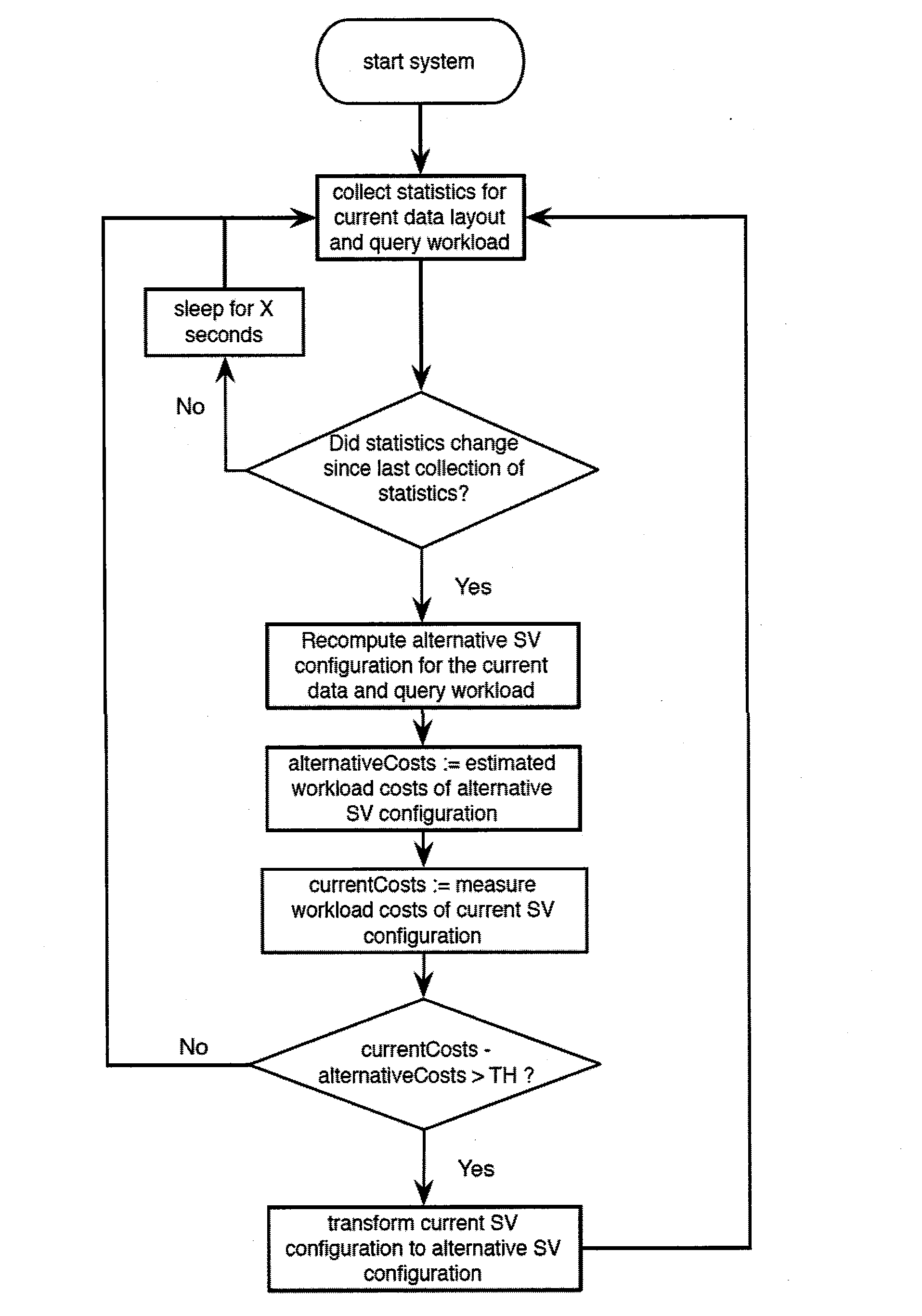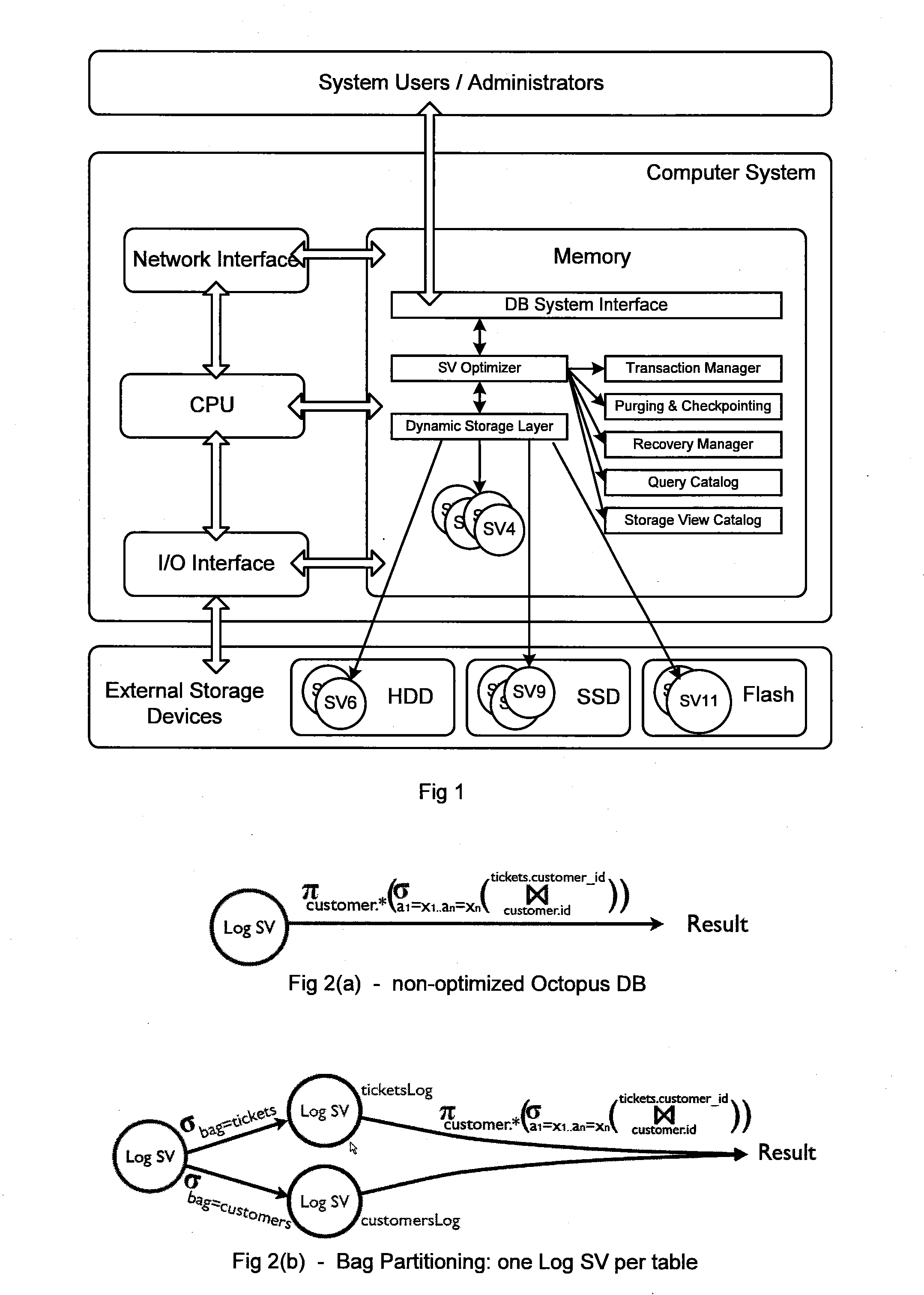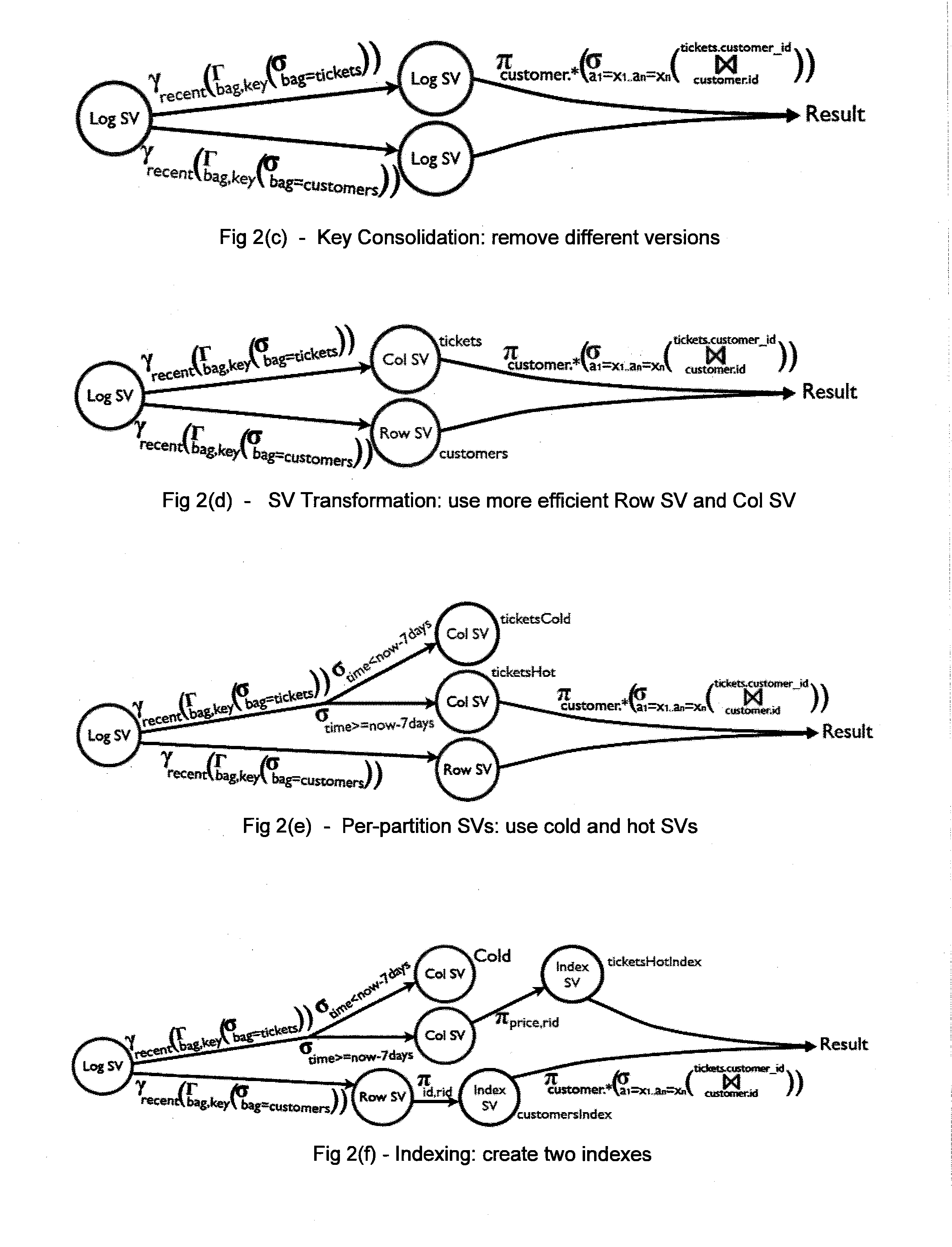Method of Storing and Accessing Data in a Database System
a database system and data technology, applied in the field of methods and systems of storing and accessing data in database systems, can solve the problems of high update cost, huge drawback of row stores for read-only queries, and high cost of column stores, so as to reduce the amount of data read, improve i/o-efficiency, and improve data access.
- Summary
- Abstract
- Description
- Claims
- Application Information
AI Technical Summary
Benefits of technology
Problems solved by technology
Method used
Image
Examples
Embodiment Construction
[0075]In the following we will explain the invention using a running example. However, it is to be understood that this example is merely used for presentation reasons, and thus not intended to limit the scope of the invention. The invention also comprises other embodiments using other scenarios. In general, all scenarios expressible in extended relational algebra are covered by the invention.
[0076]FIG. 1 shows the main components of the dynamic storage layer DSL and the database system in accordance with the present invention. The database system comprises components similar to the ones known from traditional DBMSs (transaction manager, query optimizer, etc.). The most striking difference is the provision of a primary, preferably sequential, data structure Log SV in the form of a primary log store, as well as the provision of an at least one adapted data structure SV in the form of a adapted data structure store.
[0077]The data model in accordance with the present invention is as fo...
PUM
 Login to View More
Login to View More Abstract
Description
Claims
Application Information
 Login to View More
Login to View More - R&D
- Intellectual Property
- Life Sciences
- Materials
- Tech Scout
- Unparalleled Data Quality
- Higher Quality Content
- 60% Fewer Hallucinations
Browse by: Latest US Patents, China's latest patents, Technical Efficacy Thesaurus, Application Domain, Technology Topic, Popular Technical Reports.
© 2025 PatSnap. All rights reserved.Legal|Privacy policy|Modern Slavery Act Transparency Statement|Sitemap|About US| Contact US: help@patsnap.com



